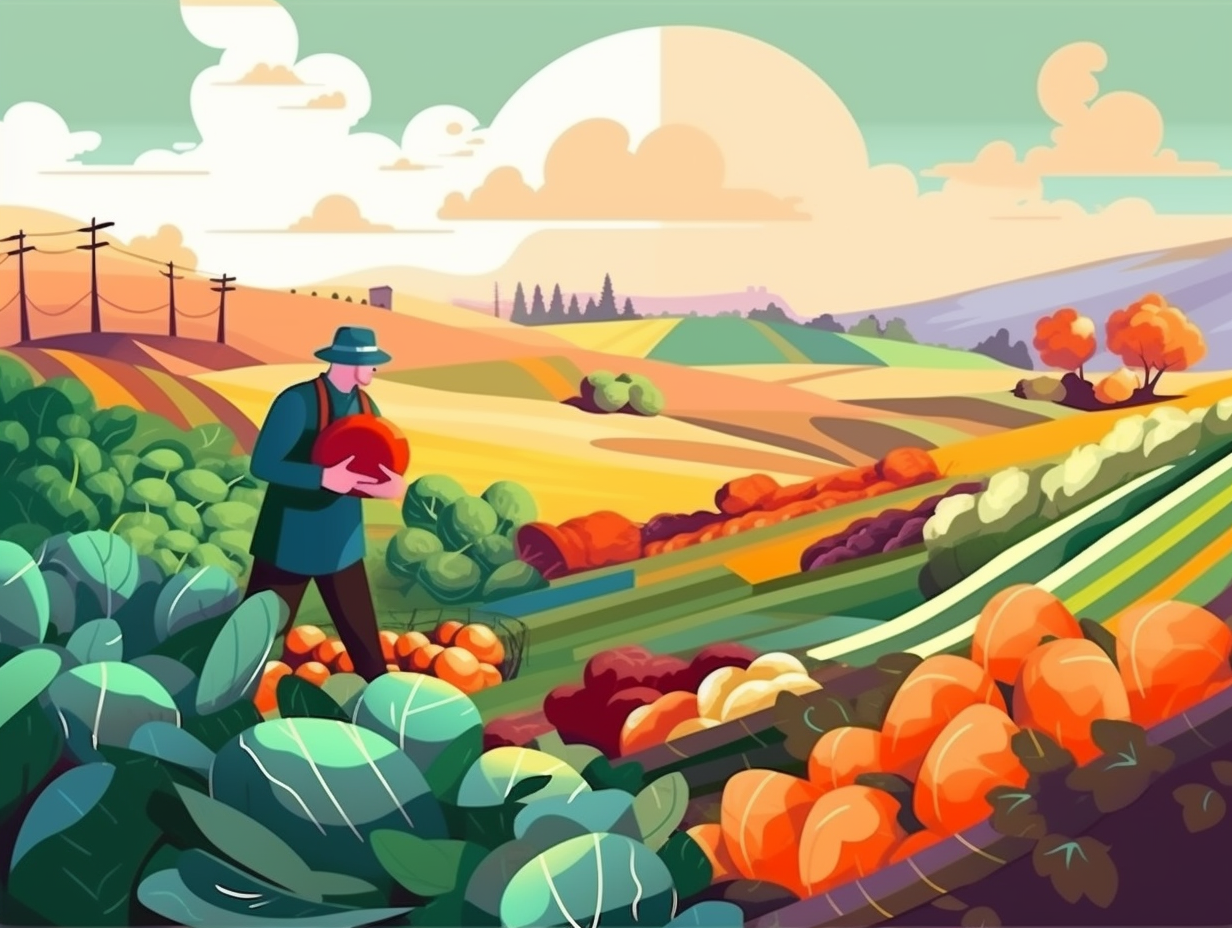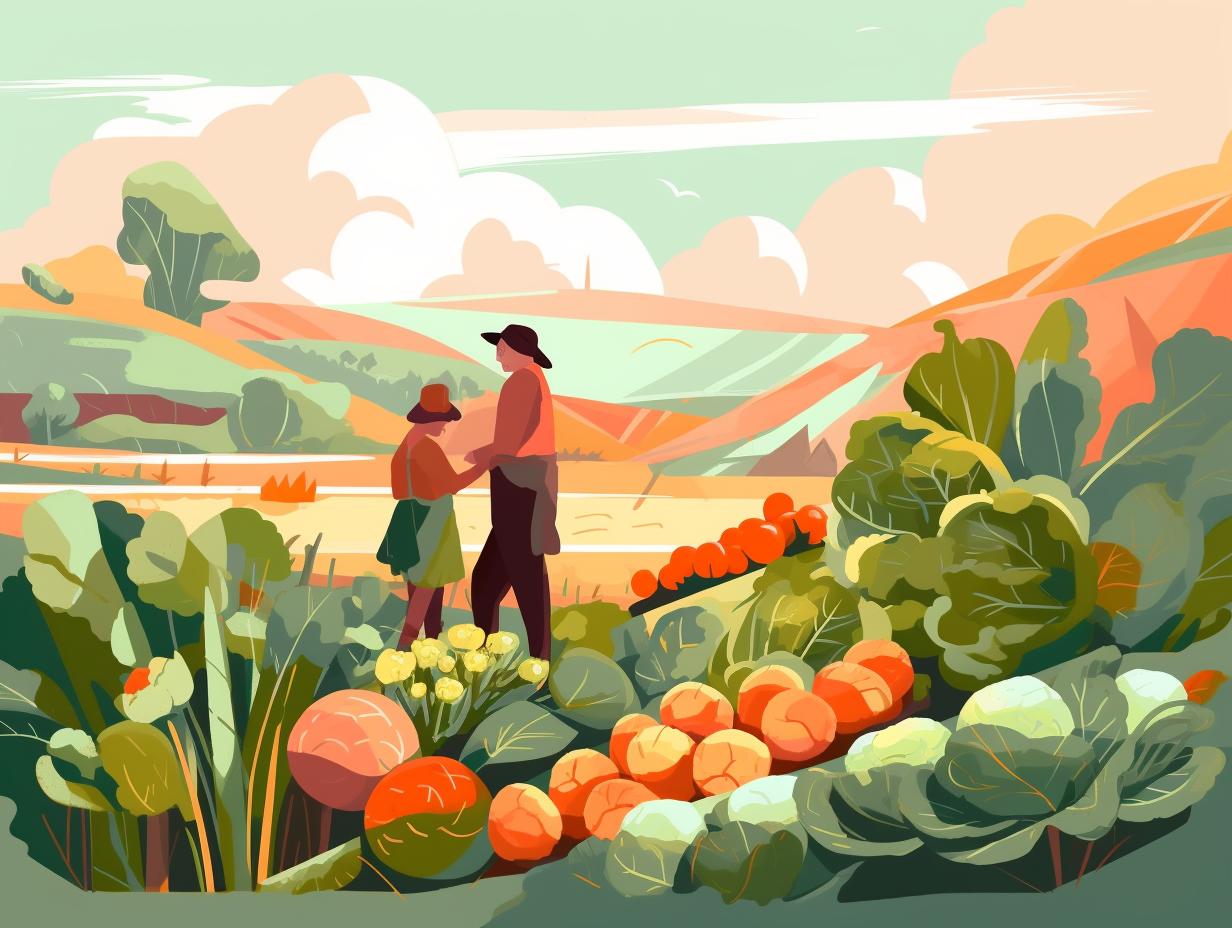Veggie Delights: 14 Fascinating and Surprising Fun Facts About Vegetables You Need to Know!

1. Cucumber Hydration Heroes
Step aside, Aquaman: cucumbers are the true unsung heroes of hydration! With a whopping 96% water content, munching on these cool cucumbers can help you stay quenched while packing in essential vitamins, minerals, and fiber, as revealed by healthyeating.sfgate.com. In fact, many of their veggie friends like lettuce, zucchini, and radish are also at least 90% water, proving that sometimes, hydration tastes better in greens than in sporty blues and reds!
Source => aquacareprogram.com
2. Yellow Bell Peppers: Vitamin C Superstars
Step aside, oranges – there's a new vitamin C superhero in town, and it's dressed up in a bell-shaped costume of yellow goodness! Behold the mighty yellow bell pepper: a veritable powerhouse of vitamin C, containing a whopping 341 mg – almost four times the amount found in oranges. Red and green bell peppers also pack a punch, with 152 mg and 95.7 mg of vitamin C, respectively, all while being low in calories and high in fiber.
Source => thehealthy.com

Did you know that raw apples, mint leaves, and lettuce can magically eliminate garlic breath? Discover the science behind this natural remedy! 🍏🌿🥬
=> Fun Facts about Nutrition
3. The Misunderstood Potato Eyes
If potatoes could talk, they'd probably shout, "I spy with my little eye, a prime condition to sprout!" Oh, the misunderstood tuber, contrary to popular belief, doesn't grow eyes just sitting around lazily: The truth is, potato eyes form and sprout when specific growing conditions coax them from dormancy, and although desirable for seed potatoes, sprouting eyes can lead to solanine poisoning in cooking potatoes, proving idleness is not the root cause of their ocular growth!
Source => homeguides.sfgate.com
4. Corn: The Symphony of Summer
Corn on the cob, that sunshine on a stick reminding us of barbecues and sweet golden smiles: this veggie maestro orchestrates countless stories, as each average ear features one silky strand per kernel, typically harmonizing in 16-row orchestras, and can hit 5 million pollen high notes from a single tassel! But beware the odd-rowed rebel child—born under stress, straying from its even-rowed kin—savor their defiance as you munch away.
Source => foodreference.com

5. Kohlrabi: Alien Veggie Powerhouse
Behold, the unassuming Kohlrabi: the superhero of vegetables that bulges with wholesome powers, rescuing your health while masquerading as an alien spaceship! This one-stop shop offers a full meal deal that won't break the calorie bank, harnessing the might of carotenes to vanquish weak vision: Kohlrabi is a mighty, versatile veggie where the entire plant can be eaten, making it an ideal choice for culinary adventure with its low cal, high fiber provisions, and vision-enhancing properties. No need for x-ray vision to enjoy this spacey garden gem!
Source => newcityneighbors.org
6. Lettuce: The Ancient Emo-Juice Plant
Before kale had a glow-up, lettuce reigned supreme as the "divine emo-juice plant" of the ancient world: Highly valued by Egyptians for its medicinal properties, the milky juice lettuce exudes when cut was linked to both milk and semen, with lettuce seed oil even being used for hair regrowth, among other things. In Roman times, it served as a pre-dinner wake-up call, due to its supposed sleep-inducing effect that forced guests to stay awake through the meal.
Source => smithsonianmag.com
7. Nopal Cactus: Nutrient-rich Multitasker
Don't worry, be 'nappy': the mighty nopal cactus is more than just a poster child for tequila-fueled escapades and prickly misadventures! In truth, this multi-talented veggie-hero wears the cape of nutrient-rich eliminator of diabetes, liver-drama, and ulcer-antagonists, while moonlighting as an antioxidant, anti-inflammatory, and immune-boosting superstar. Take a bow, nopal – but beware those sneaky commercial sugar bandits piggybacking on your good name!
Source => medicalnewstoday.com
8. Onion Cutting: Cry-Free Technique
Onion ninjas everywhere rejoice! Tear-jerking no more as you slice your way through your kitchen battles: Simply freeze your onions for 15 minutes before cutting them, and the frozen temps will slow down the reaction that releases the tear-inducing acid enzyme, making your chopping experience a cry-free affair.
Source => recipes.timesofindia.com
9. Peas: A Legume's Long Journey
Before peas were keeping it cool with their buddy, the carrot, in your mixed veg medley, they spent centuries being the outcast, misunderstood legume: Peas were originally grown for their dry seeds and only gained acceptance as fresh-shelled green peas after a long, arduous journey dating back to the Bronze Age, where their cultivation began in ancient Greece, Rome, and even within Egyptian tombs at Thebes!
Source => organicseeds.top

10. Protein-Packed Edamame Snacks
Sayonara, humdrum snacks: edamame is here to soy-lence your hunger while packing a protein punch! This Japanese green bean wonder is not just delicious, it's a protein powerhouse: with 11.8g of protein per 100g, it boasts the same amount as 2 eggs, 0.4 chicken breasts, or 0.8 cups (228g) of black beans, all without the cholesterol and saturated fat. Looks like we've bean schooled in the art of snacking, courtesy of edamame.
Source => prospre.io
11. Zucchini: The Culinary Chameleon
From Mesoamerican squash whisperers to Italian zucchini maestros, it's been a long journey for this versatile veggie star: The zucchini, as we know it today, traces its roots back to over 7,000 years ago, when squashes were first domesticated in Mesoamerica, and evolved into the modern green wonder after being fine-tuned by northern Italian plant breeders in the late 19th century. Despite masquerading as a veggie in the food world, this undercover fruit is a culinary chameleon, winning hearts in dishes like ratatouille and zucchini bread.
Source => en.wikipedia.org
12. Emperor Augustus and Asparagus
Emperor Augustus may not have had an "Asparagus Fleet," but he sure had a need for speed when it came to his veggies: Despite the lack of evidence supporting the creation of an asparagus delivery fleet, Emperor Augustus was indeed a fan of the green stalks, so much so that he coined the phrase "velocius quam aspragi conquantur," which translates to eating something faster than it takes to cook asparagus.
Source => asparagus-lover.com
13. Yellow Bell Peppers: Orange's Vitamin C Rival
Forget orange is the new black: yellow is the new gold when it comes to vitamin C! While oranges have been stealing the limelight with their citrusy charm, the humble yellow bell pepper has been secretly packing a punch in the background: boasting over four times the amount of vitamin C compared to an orange, one large yellow bell pepper delivers an astonishing 340 milligrams, making it a prime contender for your immune system's MVP during cold and flu season.
Source => today.com
14. Tomatoes: From Fear to Ketchup Fame
Once shrouded in fear and loathing, the humble tomato has now ketchupped its way to our hearts and plates: Long considered dangerous due to its nightshade family ties, tomatoes have proven to be a nutritious powerhouse, ranking as the second most popular vegetable in the US, behind potatoes. Packed with potassium, vitamin C, and antioxidants, these once-avoided red delights have spread their influence from ketchup to pasta sauce, conquering kitchens and taste buds worldwide.
Source => foodrevolution.org
Related Fun Facts




















